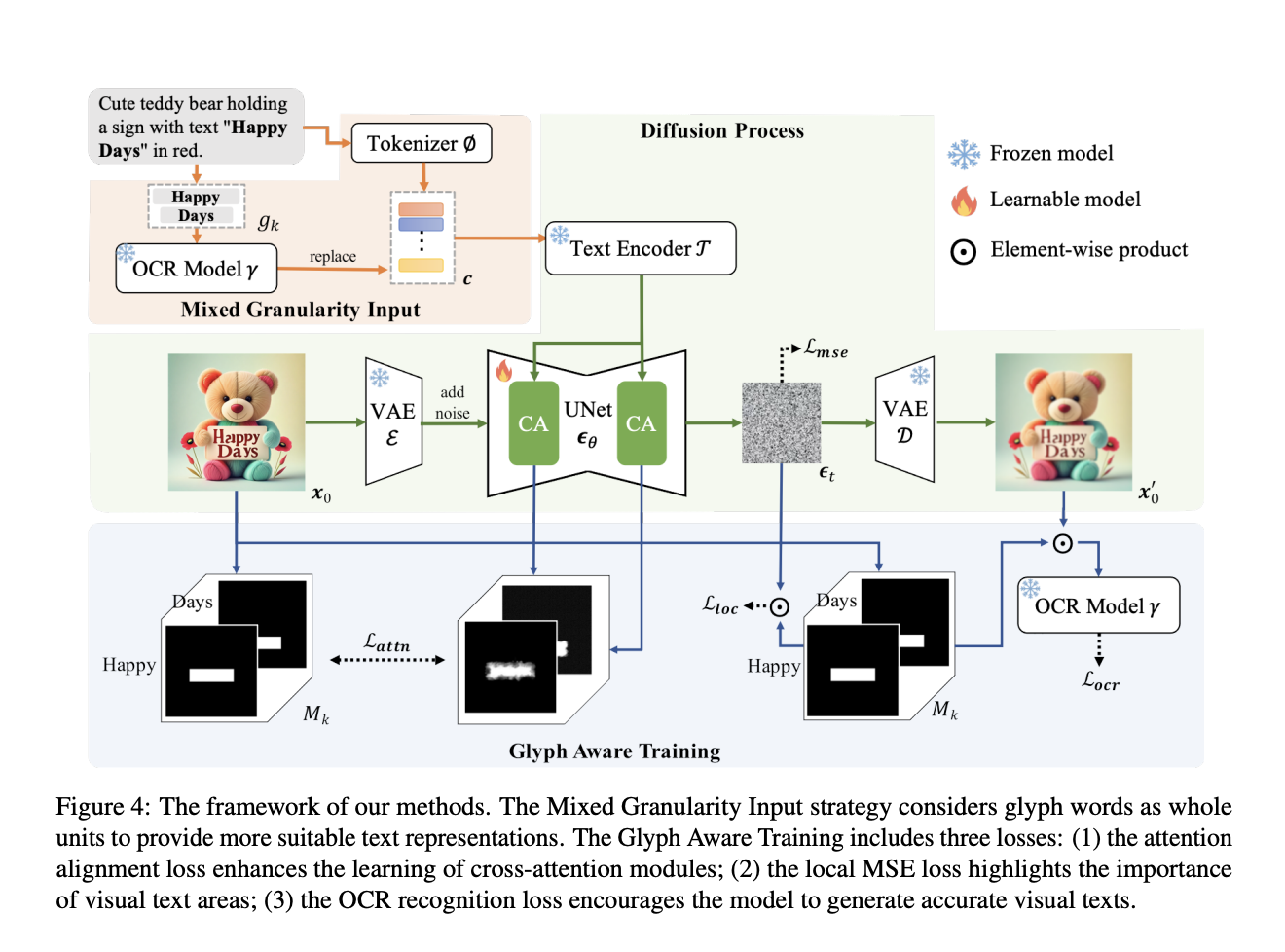
Challenges in Visual Text Generation
Creating clear and attractive visual text in image generation models is difficult. Although diffusion-based models can produce high-quality images, they often fail to generate readable and correctly positioned text. Issues like misspellings and misalignment are common, especially in non-English languages like Chinese. This limits their use in important areas such as digital media and advertising, where accurate text is crucial.
Current Limitations
Existing methods for generating visual text often embed text directly or use strict positioning rules during image creation. However, these methods have drawbacks. For instance, Byte Pair Encoding (BPE) complicates text generation by breaking words into smaller parts, making it hard to produce coherent text. Additionally, the cross-attention mechanisms are not fully optimized, leading to poor alignment between the visual text and input tokens. Attempts to improve this, like TextDiffuser and GlyphDraw, often result in limited visual diversity and inconsistent text integration. Most models also struggle with languages other than English, particularly Chinese.
Innovative Solutions
Researchers from Xiamen University, Baidu Inc., and Shanghai Artificial Intelligence Laboratory have introduced two key innovations: input granularity control and glyph-aware training. The mixed granularity input strategy treats whole words as single units, simplifying text generation. A new training method includes three main components:
- Attention Alignment Loss: Improves text-to-token alignment.
- Local MSE Loss: Focuses on important text areas in images.
- OCR Recognition Loss: Enhances accuracy in generated text.
Technical Framework
This approach uses a latent diffusion framework with three main parts: a Variational Autoencoder (VAE) for image processing, a UNet denoiser for diffusion management, and a text encoder for input prompts. To address BPE challenges, the researchers applied a mixed granularity input strategy, treating words as whole units. An OCR model is included to refine text features.
Training and Results
The model was trained on a dataset of 240,000 English samples and 50,000 Chinese samples, ensuring high-quality images with clear text. Training involved both SD-XL and SDXL-Turbo models over 10,000 steps with a learning rate of 2e-5.
This solution shows major improvements in text accuracy and visual quality. Metrics like precision and recall for both English and Chinese text generation significantly exceed those of existing methods. For instance, OCR precision reaches 0.360, outperforming other models. The new approach generates more readable and visually appealing text, integrating it smoothly into images while supporting multilingual text generation, especially in Chinese.
Conclusion
The developed method advances visual text generation by addressing key challenges in tokenization and cross-attention. With input granularity control and glyph-aware training, it enables the creation of accurate and visually pleasing text in both English and Chinese. These innovations enhance the practical applications of text-to-image models, particularly in fields requiring precise multilingual text generation.
Stay Connected
Check out the Paper. All credit for this research goes to the researchers of this project. Follow us on Twitter, join our Telegram Channel, and connect with our LinkedIn Group. If you enjoy our work, subscribe to our newsletter. Join our 50k+ ML SubReddit.
Upcoming Event
Upcoming Event- Oct 17 202 RetrieveX – The GenAI Data Retrieval Conference (Promoted)
Empower Your Business with AI
To stay competitive, leverage the power of AI in visual text generation. Here’s how:
- Identify Automation Opportunities: Find key customer interactions that can benefit from AI.
- Define KPIs: Ensure measurable impacts on business outcomes.
- Select an AI Solution: Choose tools that meet your needs and allow customization.
- Implement Gradually: Start with a pilot, gather data, and expand AI usage wisely.
For AI KPI management advice, connect with us at hello@itinai.com. For continuous insights into leveraging AI, follow us on Telegram or @itinaicom.
Transform Your Sales and Customer Engagement with AI
Explore innovative solutions at itinai.com.


























